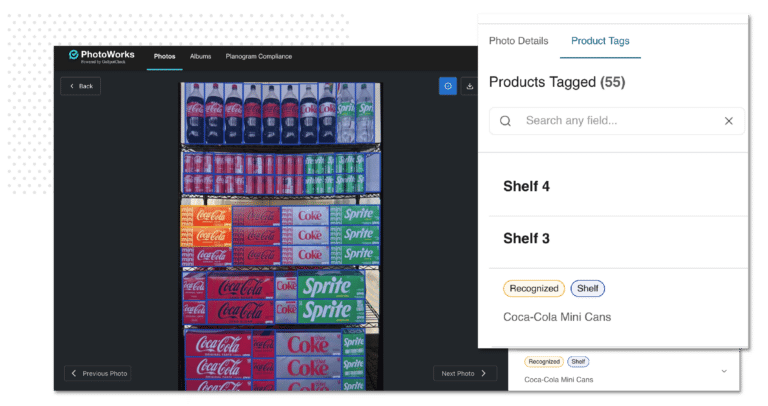As a facilities manager, your big-picture goal is to keep things running smoothly. However, that’s a lot easier said than done. Some days, it’s likely that you spend more time putting out figurative fires than integrating the buildings, people, and processes under your care.
It probably feels like you’re forced into a reactionary style of management by forces beyond your control. You’re bombarded with requests, unable to meet deadlines, and always on the clock. But what if you’re making simple mistakes that contribute to this cycle?
In this blog, we discuss five of the most common mistakes in facilities management and pair them with easy fixes. Read on to learn what to avoid, how to use data more effectively, and why employee feedback can make a huge difference in your decision-making.
1. Using paper forms for everything
In an increasingly digital world, it should be no surprise that using paper made the top of our list. Paper forms pose a vast number of risks: they’re easily lost, prone to errors, and far too slow. Worse still, they require double entry to view on a computer or smart device, making it cost double the time and effort.
The “unplugged” nature of paper might seem especially convenient for facilities management. However, compared to data solutions with offline functionality, they make it much more challenging to record, communicate, and act on facility conditions. Additionally, dynamic forms that can prepopulate data fields make gathering accurate data more accessible and faster.
With an offline-first mobile app, if a worker visits a facility outside the range of Wi-Fi, they’ll still have access to all their previously synced tasks and forms. As they fill out a form, the app automatically determines the next logical step, hides irrelevant questions, and auto-completes answers based on the context.
2. Relying too much on spreadsheets
Much like paper forms, spreadsheets have become a relic of the past. They involve hours of extra work that you don’t have time to do. Some companies resort to hiring a dedicated spreadsheet “engineer” to ensure formulas work properly. However, even when they work as intended, they create a barrier that prevents you from quickly understanding facility conditions.
If your go-to method for uploading, sharing, and dissecting data is an overcomplicated spreadsheet, you’ll lose a lot of efficiency over time. You’ll spend hours double-entering forms and uploading performance data to make a few minimalistic charts. Although spreadsheets can be an accessible way to organize data into simple diagrams, they crumble when it comes to flexibility and change management. The only way to ensure your data is real-time and actionable is with a mobile solution.
Check out the Form.com Buyer’s Guide to learn more about making a better buying decision when it comes to mobile solutions. If you’re not sure which features to look for or don’t know which issues are trending in your industry, read our recent findings in this report.
We helped one company that had been relying on “one spreadsheet to rule them all.” This document was so sensitive to changes that the company was forced to spend hours on a conference call helping each regional manager edit it correctly. Equipped with a more agile and integrated data solution, the functions behind the spreadsheet are still there, but the unfriendly user interface and difficult change management are gone.
3. Ignoring employee feedback
The people who use your facilities know what’s wrong with them. They know what is and isn’t working, and they will tell you if you provide the right outlet. However, that doesn’t mean all their feedback is useful. Many facilities managers have grown so used to the same complaints that they tune most of it out, but they might miss helpful comments.
How do you identify helpful feedback and issues worth investigating? Use an anonymous survey with integrated analysis tools to learn what employees really think. With an intelligent employee survey, you can easily separate the serial complainers from the thoughtful contributors. Use filters and reports to uncover which problems are mentioned the most—and hide responses that aren’t helpful.
A “comments box” won’t cut it. If you’re manually aggregating feedback from handwritten notecards or paper forms, you’re not going to get a clear picture of what people think. Stop ignoring feedback and start using efficient, anonymous, and digitally integrated methods to understand how your decisions affect the people under your care.
4. Failing to integrate data
A common issue in facilities management is the presence of one or more data silos. Companies often have oceans of data stored in systems that aren’t connected to anything else. This lack of integration presents a serious obstacle to efficiency because the relevant data is isolated from work orders, reports, and workflows.
Dynamic mobile forms provide the tools to discover issues in the field, clearly document them, and instantly trigger a follow-up task for the responsible employee. Instead of manually communicating issues and logging them to be stored indefinitely, properly integrated forms draw from data across all your systems to prepopulate fields and trigger workflows.
Form.com specializes in taking your existing forms and creating optimized, integrated versions of them. Our custom-built solutions communicate with your third-party systems and eliminate data silos by automatically connecting forms with the right workflows and information. Instead of letting data “gather dust” while workers manually resolve workflows, let Form.com’s integrated mobile forms handle the heavy lifting in the background.
5. Reacting to (and not preventing) issues
It’s a concept anyone in facilities management will understand: it’s better to prevent problems from occurring than to deal only with the symptoms. Instead of simply “putting out fires,” ensuring that issues occur less often yields better long-term results.
If an inspector discovers black mold in one of your facilities, their next move should be to lock the area down, notify the responsible people, and follow remediation procedures. But what happens after the problem is resolved? Data can’t live up to its full potential if adverse incidents don’t contribute to macro-level analysis and prevention.
For example, analysis with dashboards and reports might reveal that certain environmental conditions (like mold) are more prevalent at specific facilities during the wet season. That knowledge can bolster your inspections, ensuring that facility walkthroughs include thorough screenings for that specific problem.
Want to learn how Form.com creates powerful solutions for facilities management? Click here to see how our Dashboards help you gather deeper insights at a glance.
Ready to see your process powered by Form.com’s flexible platform? Get in touch with a solutions expert today.









